Case studies
Industries
Resources
TikTok Collection
NEW
Table of Contents
UGC platforms, or User Generated Content platforms, can revolutionise how businesses collect, curate, and strategically leverage social content for success. Read on as we unveil the definitive guide to 2025’s Top 10 UGC Platforms.
From what to look for in a platform to a detailed exploration of their advantages and a comprehensive review of the top 10 contenders, this guide equips you with the knowledge to choose the right platform that can elevate your brand’s authenticity, trust, and online presence with User Generated Content.
Let’s delve into the world of UGC platforms and navigate the diverse features, benefits, and considerations that shape this pivotal aspect of content marketing strategies.
User Generated Content platforms are designed to help businesses collect, curate, and leverage UGC for marketing and eCommerce purposes. These platforms allow companies and organisations to showcase the content that consumers and influencers create and share online, and are essentially tools that enable businesses to harness the power of UGC to enhance their marketing and eCommerce strategies.
If you have questions about UGC, check out our article: What is UGC and How to Use It in Your eCommerce Strategy.
It’s worth noting that UGC platforms differ from User Generated Content creator sites or platforms where individuals go to share their content in the hopes of getting paid/hired by brands for the content they produce.
Learn more about this in our article How to find influencers for your brand.
Social commerce has become increasingly significant in the eCommerce sector. In 2024, global revenues generated through social media platforms were forecast to reach nearly 700 billion U.S. dollars, an increase of roughly 23 percent compared to the previous year. On average, user-generated photos are 5x more likely to convert customers compared to professionally produced content so the right platform can certainly be a good investment.
These platforms play a crucial role in boosting brand authenticity and trust by utilising the content from social media. However, not all UGC platforms are built equally and come with different benefits.
Let’s take a look at some of the benefits of adopting these platforms:
Already convinced of the power of UGC? Book a demo of our platform and see how Flowbox works!

Flowbox is Europe’s leading UGC platform and one of the world’s leading platforms. It offers a visual marketing platform designed to help brands use and distribute social content throughout the customer journey, thereby improving brand engagement, social proof and sales.
Flowbox is an award-winning SaaS company that provides a visual marketing platform designed to assist brands in utilising and disseminating social content across the buyer journey, thereby enhancing engagement, social proof, and sales. Flowbox’s core focus is on leveraging technology to empower brands to generate and utilise owned, paid, earned, and UGC, resulting in a more efficient, converting, and transparent approach to marketing and eCommerce. Flowbox doesn’t just deal with visual UGC including images and videos but star Ratings & Reviews too.
Flowbox’s strength lies in quick and effective integrations that blend in seamlessly on your website – regardless of what eCommerce solution you use. The platform boasts a wide suite of tools and capabilities including advanced analytics, AI product recognition, internationalisation, robust rights request management tools for requesting User Generated Content permission and pre-approval moderation as well as time-saving automation making it one of the most advanced UGC platforms on the market.
Flowbox caters to a broad client base consisting of eCommerce websites, brands with physical stores, non-profits, and educational institutions. Whilst our client base boasts a long list of eCommerce powerhouses we also have clients that are educational institutions, brick-and-mortar-only retailers, museums, travel destinations and more.
So if you’re looking for a platform and service that can be adapted to the specific needs of your business Flowbox could be the perfect fit.
Flowbox is compatible with all websites and supports popular eCommerce solutions like Shopify, Magento, VTEX, Salesforce Commerce Cloud, PrestaShop, Shopware and WooCommerce.
Flowbox caters to all industries including Apparel & Fashion, Footwear, Furniture, Beauty & Cosmetics, Luxury Goods & Jewellery, Sporting Goods, Consumer Goods, Consumer Electronics, and Food & Beverages.
Book a demo now to learn more about the Flowbox platform, pricing and how it could adapt to the needs of your business or organisation.

Bazaarvoice is a User Generated Content platform that empowers brands and retailers to harness the power of consumer-generated content to drive engagement, build trust, and enhance the overall online shopping experience.
One of the key strengths of Bazaarvoice is its ability to collect, analyse, and amplify User Generated Content, including reviews, ratings, photos, and videos. Brands and retailers can seamlessly integrate Bazaarvoice into their eCommerce platforms to showcase authentic customer experiences, thereby influencing potential buyers and building credibility.
They integrate well with Woocommerce, Magento, and Shopify among other leading platforms.
Fashion & Apparel, Consumer Electronics, and Consumer Packaged Goods.
Bazaarvoice requests information from brands on their website looking to learn more about the platform and its pricing. They then get in touch with brands directly.
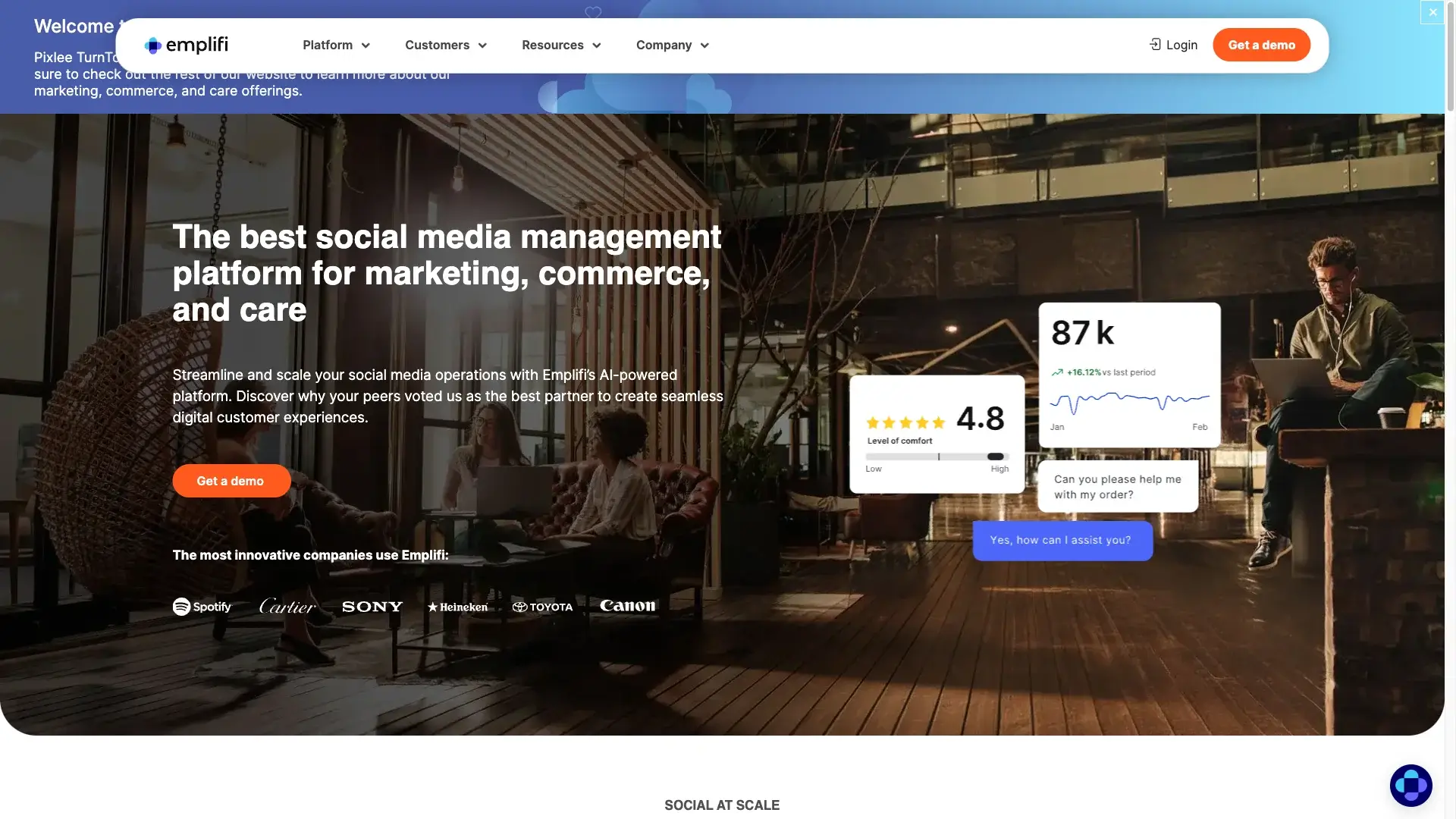
Emplifi (Pixlee TurnTo) specialises in community-driven commerce, offering a platform for Social UGC and influencer marketing, as well as Ratings & Reviews. They pride themselves on being a unified platform that caters to the aspects of social commerce; UGC from social media, Ratings & Reviews, and influencer marketing management. Pixlee is a strong option for brands that rely heavily on social media for their marketing efforts.
An array of platforms including Shopify, BigCommerce, Salesforce Commerce Cloud, Magento, and Magento 2.
Pixlee caters to different industries with the main ones being Apparel & Fashion, Beauty & Cosmetics, Home Goods, Travel & Tourism.
They don’t offer ready-made plans or pricing structures on their website, those looking for pricing would need to book a demonstration of the platform from their team.
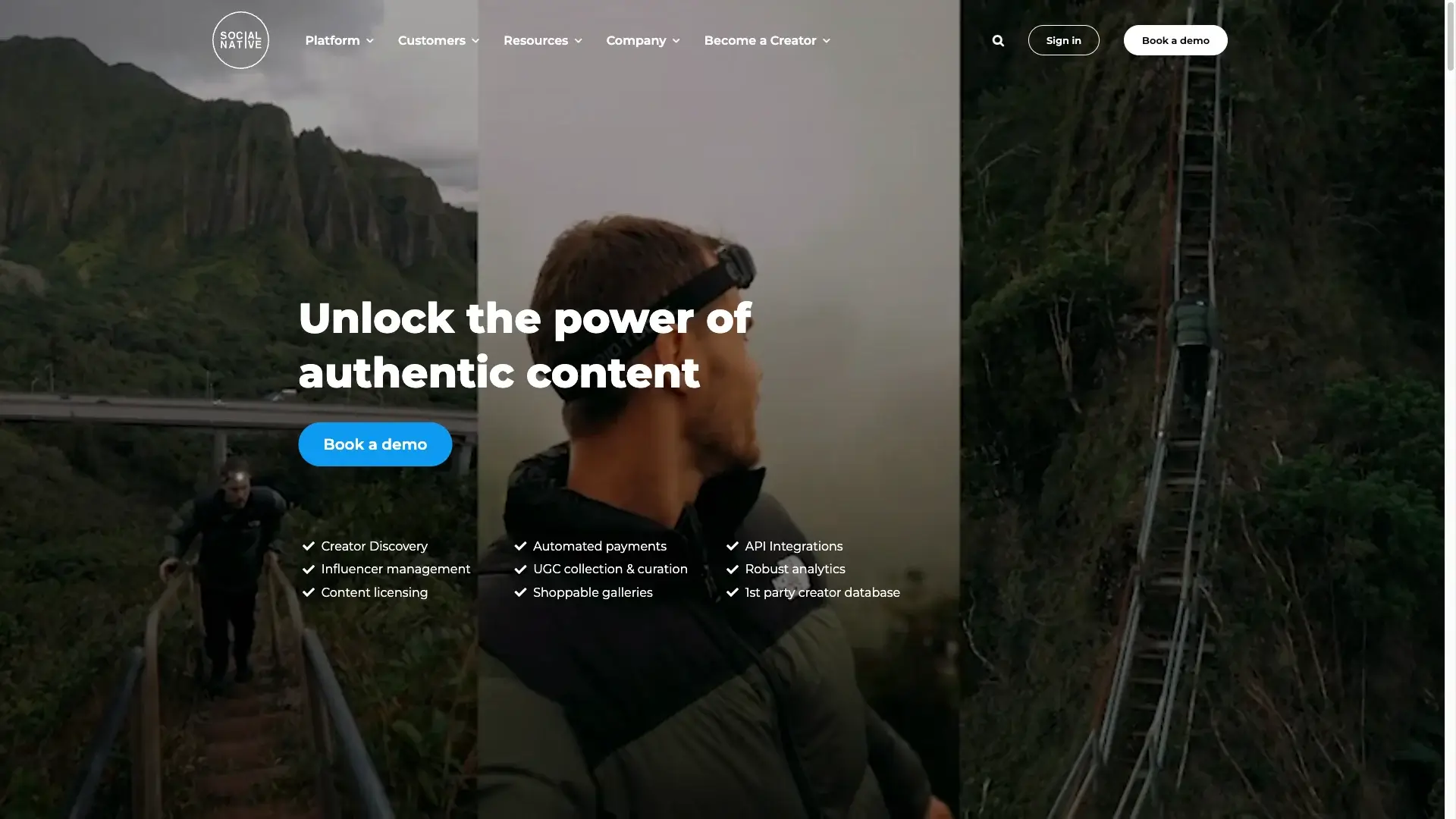
Social Native (formally known as Olapic) is a UGC platform with a focus on creating shoppable galleries and UGC collection and curation. Social Native packs a punch when it comes to automation claiming that their platform removes 90% of the manual processes around UGC and influencer marketing.
Social Native is a promising option for those looking for a platform with a focus on content and creator discovery, influencer management, and UGC curation. The platform also offers some level of artificial intelligence-backed technology, users can use AI to change still UGC images into videos for example.
Social Native has a pretty broad compatibility with most popular eCommerce solutions however they don’t disclose which specific eCommerce solutions they are compatible with.
Social Native has a lot of clients in the Cosmetics or Fashion & Apparel industry.
Social Native doesn’t have an open pricing structure, those interested in learning more about their platform are required to book a demo.
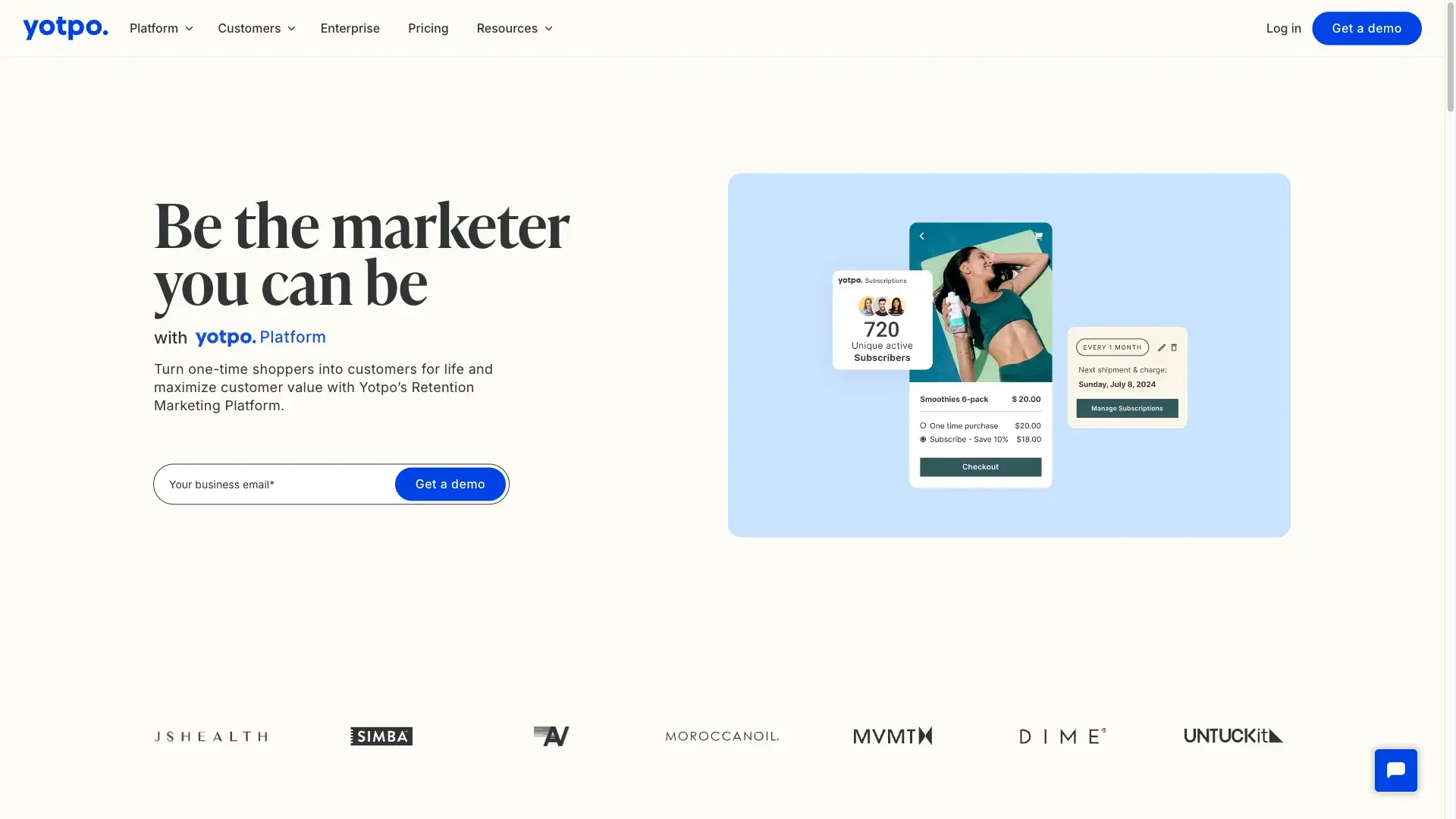
Yotpo is an eCommerce Retention Marketing Platform that helps businesses collect and utilise UGC, such as reviews, ratings, and photos, to enhance their online presence and drive sales. Yotpo enables companies to gather authentic customer feedback and promote it through various marketing channels to build trust and engage with their audience.
The platform hosts an array of different retention marketing-driven products and a suite of tools designed to collect, curate, and display customer reviews, photos, and questions across various online channels as well as ways to contact consumers that are aimed at achieving customer retention like email and SMS marketing capabilities.
All major eCommerce platforms, including Magento, Shopify, Shopify Plus, BigCommerce, Salesforce Commerce Cloud and WooCommerce.
All industries but they predominantly cater to the world of eCommerce.
Yotpo has a multi-tiered pricing structure. At the entry level, the cost of the platform is free and the free version has no time limit and offers some limited capabilities like email marketing. For the paid version of the platform, there are different ready-made plans Growth ($15 per month), Prime ($119 per month), Gold and Powerhouse, as well as an Enterprise option that requires you to book a demonstration of the platform.
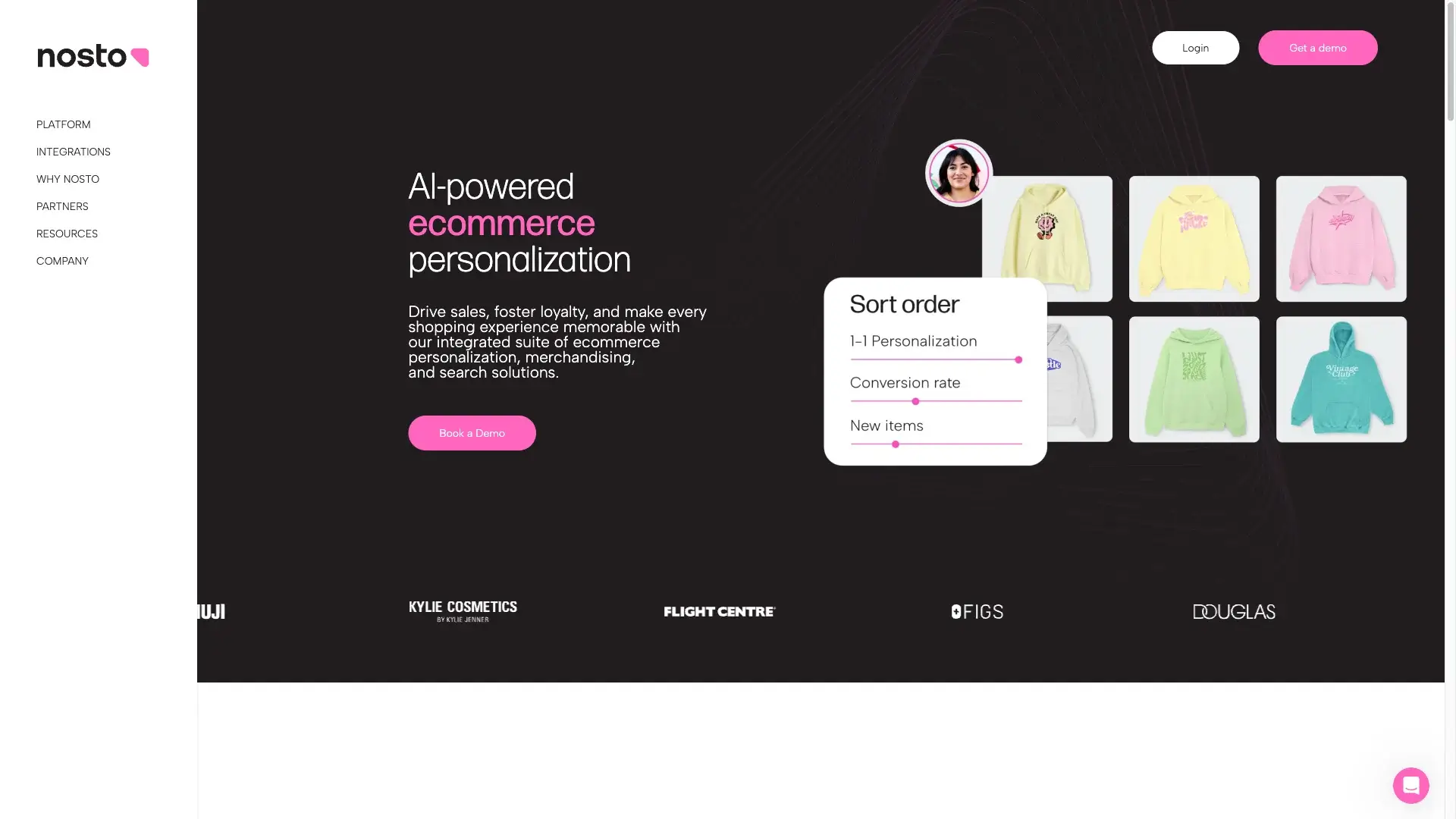
Nosto (Stackla) is a UGC Content platform designed to empower brands and marketers to harness the authentic voices of their audience across various digital channels. Founded on the belief that social proof is a powerful tool for building brand credibility and engaging audiences, Nosto offers a suite of solutions for merchandising as well as aggregating, curating, and showcasing UGC. This platform can be a strong option for bigger eCommerce brands.
They claim to be able to pull from any social media network.
Nosto is known for supporting various eCommerce solutions, including popular platforms like Shopify, Magento, WooCommerce, BigCommerce, Salesforce Commerce Cloud, and others.
Retail, Apparel & Fashion
Nosto offers a free version and their subscription model consists of the Incubator Plan ($99 per month and only for brands that draw in less than €2 million per year in sales). The Incubator Plan is not the only plan available at Nosto. However, the information provided does not detail the pricing of the other plans.

Foursixty emphasises visual content, particularly photos and videos from Instagram. Foursixty primarily concentrates on curating and displaying user generated content specifically from Instagram. This could be a good option for businesses heavily reliant on Instagram and visual UGC for their marketing efforts.
They integrate with leading eCommerce platforms, including Woocommerce, Magento, and Shopify, among others.
Travel & Tourism, Fashion & Apparel, Consumer Goods, Beauty & Cosmetics.
Foursixty has a simple three-tiered pricing structure consisting of Core ($50 per month), Complete ($300 per month), and Complete Plus ($500 per month).

Sauce (originally Snapppt or SNPT) is a social commerce platform specialising in User Generated Content and influencer marketing. As with some of the previous examples, they claim that the core of their platform is designed to transform social media content into meaningful shopping experiences.
They distinguish themselves from other platforms by focusing on influencer management tools like Sauce Influencer Plus. With this product, you can “tap into a dynamic network of influencers and authentic micro-creator content” to build and deliver personalised influencer campaigns. Video also seems to be an important visual asset in Sauce’s platform. They have quite a large variety of options when it comes to delivering videos on websites (grids, carousels, loop clips, Sauce TV, and video cards).
They support Squarespace, BigCommerce, Shopify, Shopify Plus, Salesforce, Wix, WooCommerce, Magento, June, Klaviyo, Intuit Mailchimp.
They have a “Use Cases” section on their website where we can see the types of brands that use Sauce. Their platform applies to all industries but most of their clients are from the Fashion & Apparel sector.
You can get started for free with their Basic package. On the Shopify App Store, they publicly share several packages (Essentials, Standard and Prime) going from $50/month to $600/month.
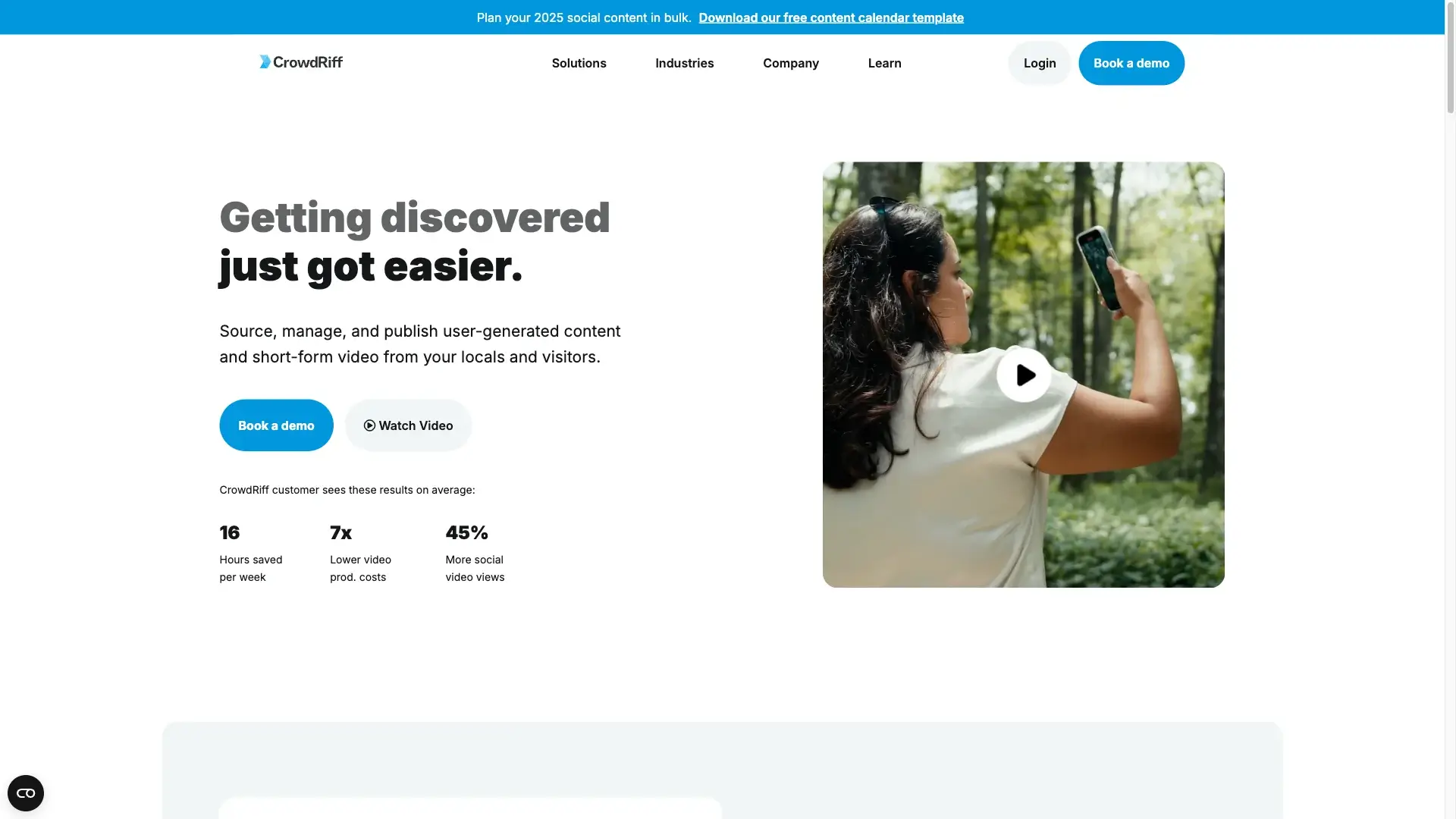
Crowdriff is a User Generated Content platform aimed at the travel and tourism industry. It offers a fairly simple workflow and it is known to be a user-friendly platform. Its advanced search features simplify the process of discovering additional content referencing your brand.
You can request usage rights, archive it in their digital asset management library, and seamlessly publish it on your website through UGC galleries. For those in the relevant industry, Crowdriff can be a great fit as their product and service are modelled around the travel and tourism industry.
Check out our article on How UGC has increased bookings in the Leisure, Travel and Tourism sector.
They do not reveal the specific eCommerce platforms with which they are compatible.
Travel & Tourism
Crowdriff does not have open pricing plans but those looking to learn more can submit a pricing request form via their website and wait to hear back from their team with more information.
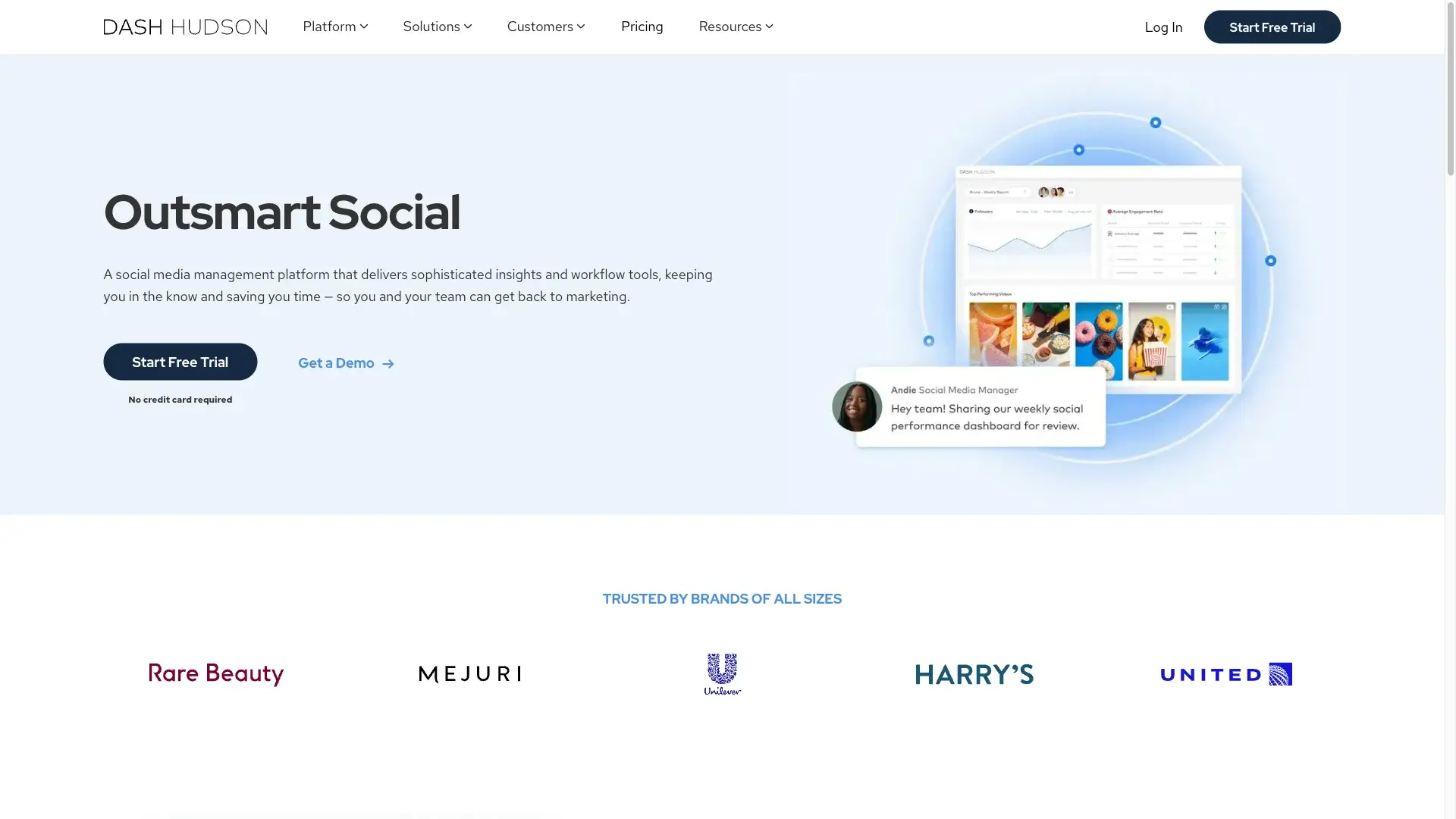
At the core of Dash Hudson’s offerings is its emphasis on visual marketing. The platform is best described as a social media management platform and specialises in scheduling and analysing social media content and collection and curation of user generated photos and videos, allowing brands to showcase authentic content created by their customers. Dash Hudson could be the right fit for those to prioritise influencer and visual content management.
They cover Google Commerce Cloud and Shopify however may not cater to as much of a selection as their competitors.
The top industries they cater to are Apparel & Fashion and Beauty & Cosmetics.
Dash Hudson has four core packages Grow ($499), Engage ($899), Advanced ($1599) and Enterprise ($2999) as well as two premium packages Social Listening ($999) and Premium Analytics (custom pricing).
There is a range of User Generated Content platforms on the market. When it comes to factors like features, capabilities, and customer service there is a wide range of variation in what’s on offer. The top UGC platform for you will depend on your business or organisation’s specific goals and requirements.
Here are some useful questions to ask yourself when you’re choosing between different platforms:
Requesting User Generated Content permission from creators is one area where UGC platforms differ. Not all platforms have a feature that allows you to request media rights.
Ensure that the platform provides an easy way to request media rights from the consumers generating content and tagging your brand and that the platform allows you to comply with relevant legal and regulatory requirements, such as GDPR for data protection.
Check out these articles on media rights request.
It’s recommended to check if the platform you’re looking into seamlessly integrates with your website. Ask the provider if they integrate with your tech stack/website. Consider the platform’s ability to integrate with other software and services you use, such as email marketing tools, accounting software, and social media platforms.
For eCommerce websites that run on Shopify, Magento, Salesforce Commerce Cloud, VTEX and so on this will also be a factor, opting for a UGC platform that integrates well with your webshop will be of the utmost importance.
Check out these articles on UGC platform integrations.
Are there useful data or insights you can analyse from within the platform? Access to comprehensive analytics and reporting tools is crucial for understanding your content performance.
Look for an option that offers insights into customer behaviour, sales trends, and conversion rates.
Check out these articles on UGC platform analytics.
The immediacy of real-time updates fosters an environment of dynamic engagement, allowing brands to showcase fresh and relevant UGC promptly.
Additionally, real-time analytics provided by these platforms offer valuable insights, empowering businesses with up-to-the-minute data for informed decision-making and strategic adjustments.
Do they offer a high level of customer assistance to ensure the success of your UGC campaign? UGC platforms should offer comprehensive customer support to empower businesses in optimising their UGC campaigns. Comprehensive support ensures that users can navigate platform features effectively, unlocking the full potential of their UGC initiatives.
From initial setup to ongoing strategy refinement, dedicated customer support enhances user experience, fosters campaign success, and builds long-term partnerships between businesses and platforms.
The platform should make your life easier so a user-friendly interface is essential. Look for a platform that is intuitive and easy to navigate, reducing the learning curve for your team and enhancing the user experience for your customers.
Below are frequently asked questions and answers regarding User Generated Content and UGC platforms to facilitate your search and selection:
Wondering why to integrate UGC into your marketing strategy? User-generated content can serve as valuable marketing material, showcasing genuine interactions with products or services. It is useful because it offers authentic and diverse perspectives, fostering a sense of engagement with the community. It improves trust and credibility as it comes directly from users and reflects real experiences and opinions.
Check out User Generated Content Examples: 16 Inspiring Galleries.
User Generated Content can be found on various online platforms such as social networks (e.g. Instagram, TikTok, Facebook, Pinterest, and Twitter) forums, blogs, and other community-driven websites where users create and share content. Although social media posts are commonplace examples of UGC written product ratings and reviews are also a form User Generated Content.
The most straightforward and least time-consuming way to gather UGC is via a UGC platform or social media aggregator. The benefit of working with a platform is that it collects all of your user content in one centralised hub, and from there the right platform will make it easy to moderate or request media rights.
One of the fantastic things about UGC is its versatility. UGC can be utilised anywhere, including embedded social feeds on websites, in ad campaigns, newsletters, and organic posts on social media accounts. Learn how to embed an Instagram feed on your website.
An efficient UGC moderation workflow will most likely consist of a combination of automation and human moderators. This combination ensures that automation saves time and a human touch ensures that brands can safeguard their reputation, uphold consistency, mitigate risks, and filter out irrelevant or low-quality content.
Check out these articles on content moderation with a UGC platform.
There are many different ways to generate more UGC. Actively responding to and showcasing UGC on your brand’s official channels encourages ongoing participation and builds a stronger connection between the brand and its community, fostering a positive feedback loop for continuous UGC generation. Implementing creative and interactive campaigns, such as contests or challenges, can motivate consumers to share their experiences with the brand.
Leveraging social media platforms effectively, brands can also initiate conversations, polls, or hashtags that prompt users to contribute content. Providing incentives, such as exclusive discounts or recognition, can further motivate users to share their stories or creations.
Check out these articles on content collection and moderation with a UGC platform.
The best kind of UGC for brands depends on various factors, including the brand’s identity, target audience, and marketing goals. However, some common types of UGC that tend to work well for many brands include user generated images, videos, reviews and testimonials.
In theory, UGC is free to collect, although many companies choose to work with a platform that costs money. The cost of UGC can vary significantly and depends on several factors.
Generally, UGC costs may include expenses related to running campaigns, providing incentives or rewards to users, managing and moderating content, and any promotional or marketing costs associated with showcasing the UGC.
The specific budget for UGC initiatives will be influenced by the scale and nature of the campaign, the platform used, and the strategies employed by the brand to encourage user participation.